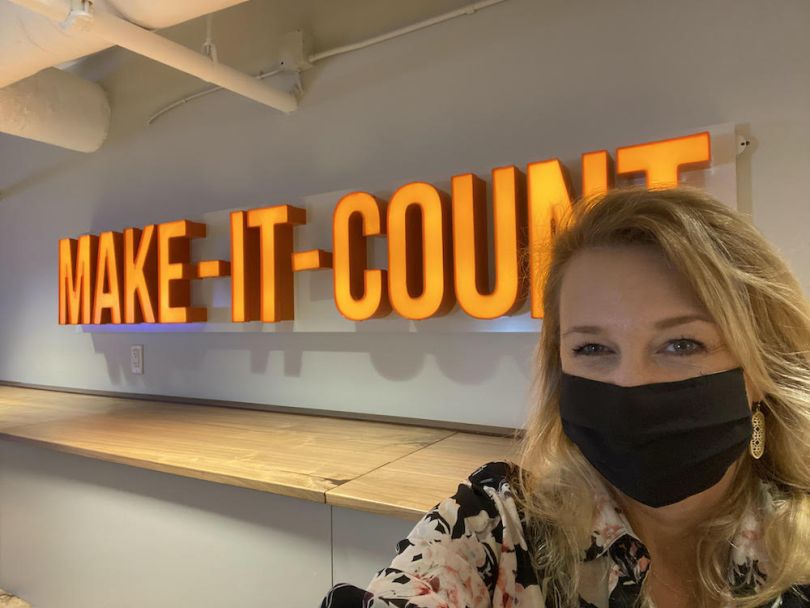
Long before she became 8am (Formerly AffiniPay)'s chief marketing officer, Meg Swanson found herself at a conference table, surrounded by men and consumed by a fear of speaking up.
What happened next would change Swanson’s career forever.
“The leader of the project looked at me and asked me to share my opinion with the group,” Swanson said. “I was instantly elevated to a person whose input mattered.”
The simple act of calling on someone who was often quiet in meetings had such a profound effect on Swanson that she made the technique common practice in her executive roles at Accruent, IBM, and, as of summer 2020, 8am (Formerly AffiniPay).
The goal? To help ensure no idea goes unheard and that everyone, especially every woman, is given an opportunity to contribute.
“It’s on all of us, but especially managers, to boost confidence and give those who aren’t vocal on projects or in meetings a platform,” Swanson said.
Swanson shared how else she and her leadership peers at 8am (Formerly AffiniPay) are helping women, as well as employees from underrepresented groups, ascend into management positions.
How many managers at your company identify as women, and to what extent are you meeting your goals for gender diversity in your management team?
I am so proud to be at an organization where 46 percent of managers are women. From day one, AffiniPay has focused on hiring strong talent that exemplify one of our core values: Make it count. The spirit of that sentiment is that our team comes to work ready to make every moment, customer interaction and line of code matter in the lives of our customers and our employees.
This extends to creating an inclusive environment. Ideal organizations are balanced, where no one feels like “the only one” or different because of their gender identity, race or age. Seeing a reflection of yourself in the leadership of a company is also pivotal to driving diversity. Our founder and chairman, Amy Porter, inspires everyone — including women — in our organization to constantly strive and achieve more.
It’s on all of us, but especially managers, to boost confidence and give those who aren’t vocal on projects or in meetings a platform.”
What programs and policies are you using to ensure that women have an equal chance at making that “first promotion” to a management position?
The best policy is transparency and a commitment throughout the entire organization to have a workforce that best reflects the community it serves. The other part is recognizing talent that might not be proactively raising their hands and speaking out.
Our culture is centered on raising the visibility of great work and celebrating it throughout the organization. We have a quarterly award recognition and weekly “shout out” program that ensures that strong work at all levels is shared and celebrated companywide. These aren’t top-down created recognitions; these are submitted by anyone on our team.
We also have listening forums in place with senior leaders to get to know everyone throughout the company and ask for feedback on areas we can improve on. This gives everyone exposure to senior leaders and a platform to share their thoughts.
The combination of being aware of the gender data to inform and initiate action and creating a supportive environment where superior work is celebrated are the best elements to continue to drive more diversity in management positions.
A TIP FOR FUTURE MANAGERS:
Describe the results of those policies. How have you iterated on them over time?
Ensuring that women have equal opportunities for promotion is driven by culture. At our company, having nearly 50 percent of all managers be women tells you that we are reaching balance. However, we always strive to improve since it is a fluid environment. We know that this is something that we need to be mindful of throughout the organization.
One iteration we’ve added includes standardizing interviews by asking candidates the same questions. This helps us avoid bias that can seep into the interview process, like if you interview someone you share something in common with and end up asking more questions.
I’d also like to see more women in tech and software engineering roles. Coding schools and women in technology organizations are doing a phenomenal job increasing the number of female engineers, and we, as a company, continue to support their efforts.




